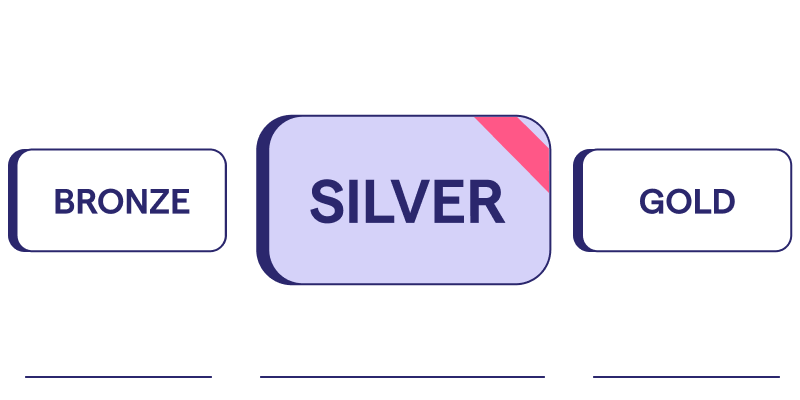Strategic agency pricing models: A comprehensive guide

Running an agency comes with its fair share of pricing headaches, like hourly billing that never seems fair and clients who aren’t quite sure what they’re actually paying for. Scope creep is another big problem, causing projects to grow beyond the original plan without any compensation.
Having a solid agency pricing model can make a world of difference. The right approach helps you set clear expectations for clients and protects your time, ensuring clients see the real value of your services.
Whether it's fixed-fee or project-based, the pricing model you adopt can directly influence your agency’s profitability and growth. An effective, consistent approach also encourages client trust, resulting in stronger client relationships.
Below, we’ll go over five core agency pricing models and give you tips on choosing one that works best for your agency.
Key takeaways:
- Choose the right model: Different pricing models work better for different scopes and client types.
- Define deliverables clearly: This helps you avoid disputes and set client expectations.
- Align pricing with clients: Match pricing models to client goals, agency offerings, and budget preferences.
- Manage risk and profitability: Consider overhead, team expertise, and scope clarity to protect profit margins and signal value.
- Leverage Ignition: Use automation, custom reports, and built-in templates to streamline pricing, payments, and contracts.
What are agency pricing models?
Your pricing model is the structured way your marketing agency charges for its services, whether that’s retainer-based, hourly, or varies by project. Agency pricing models are frameworks that help keep billing clear and consistent as your agency grows.
They’re not the same as broader pricing strategies—those are more about positioning your agency and communicating the value of your services. You can think of agency pricing models as the mechanics and pricing strategies as the bigger picture.
Choosing the right model comes with real advantages. It helps you build clear-cut pricing and service packages, creates predictable revenue for your agency, and gives you better control over project scope. It also helps ensure that your pricing reflects the value you deliver, boosting profitability.
6 core agency pricing models explained
Some pricing models may work better for your agency than others, depending on your work and your clients. Understanding your options helps you find a model that fits your agency’s workflow, keeping clients satisfied while protecting your bottom line.
1. Subscription-based pricing
With this model, clients pay a recurring fee (monthly, quarterly, or annually) for ongoing access to your services. This approach creates predictable revenue and helps smooth out cash flow, making it easier to plan resources and scale your operations.
Clients benefit from having consistent service and support without having to renegotiate terms for every engagement. That helps your agency build stronger, long-term relationships with clients.
To make this model work, you’ll need to clearly define the scope of services to prevent scope creep or overuse. You’ll also need to price carefully: if you set fees too low, profitability can quickly erode.
2. Hourly rate pricing
Hourly pricing is exactly what it sounds like: You charge clients for each hour your agency works on their project.
To calculate a base hourly rate, you’ll need to factor in costs, overhead, and utilization to ensure you get paid for all the time and resources you put in. That usually means starting with your desired salary, adding business expenses, and dividing by billable hours to determine a fair rate.
This approach typically works best for things like consulting work, where the scope of work isn’t clearly defined. Clients pay for your knowledge and time, not just completed deliverables.
That said, scope creep is still a potential issue here. Clients who are willing to pay for it can end up monopolizing your team’s time with more and more small changes or additions. Plus, there’s a higher risk of client pushback when the invoice comes in and their billable hours add up to more than they expected.
Hourly billing can also penalize your agency for speed and efficiency, causing you to make less while still providing clients with the same high-value work.
3. Project-based pricing
With project-based pricing, you charge a flat fee based on a specific project scope and clearly defined deliverables. This gives you budget clarity, and your clients know exactly what they'll be paying, which reduces the risk of billing surprises and makes approvals easier. It rewards you for efficiency, too, as you get a better effective hourly return the faster you complete the project.
But this pricing model does have its challenges. You need to have strong contracts with clearly defined scopes in place to stop scope creep. Your clients might expect extra work without extra pay if you don’t iron out these details ahead of time.
4. Retainer agreements
When you use retainer-based pricing, clients pay a set fee on a regular schedule for continuous deliverables or even just availability. Many agencies use quarterly or monthly retainers to provide ongoing access to their services, like a subscription to their expertise.
Retainer models can take different forms. You can base them on a set number of hours or specific services, or use a hybrid that combines both. This approach offers flexibility, letting you structure agreements to fit both your agency and client’s needs.
These agreements bring you predictable cash flow and the chance to build deeper relationships with clients and boost retention. Rather than constantly chasing new projects, you get long-term clients who want consistent work from you.
There’s a risk, though: unclear boundaries. Retainer agreements still need clearly defined deliverables or scopes, so clients won’t expect more than what was agreed on. Without strong, documented boundaries, you can end up with strained resources and reduced profitability.
5. Value-based pricing
The value-based pricing model aligns your fees with the perceived outcomes your agency delivers, not the amount of time or effort it takes. The greater the impact or perceived value, the higher the fee.
This model works best for strategic, high-value initiatives where clients see your services as an investment with clear potential returns. When positioned well, it allows you to capture more of the upside your work creates, while also building trust as a partner who understands business outcomes.
The challenge with value-based pricing is accurately assessing how much a client perceives your work is worth. If you undervalue your impact, you leave money on the table; if you overshoot, you risk pricing yourself out of the deal.
This model requires a deep understanding of your client’s priorities and the confidence to position your services as a premium investment, so you and your client need a higher risk tolerance overall. That shared risk makes this pricing model more demanding, but it can also be highly rewarding for both sides.
6. Performance-based pricing
Performance-based pricing ties your fees directly to realized results, usually key metrics like social media engagement, return on attention (ROA), or conversions. Rather than charging for deliverables or time, you get paid based on tangible, measurable outcomes.
You can structure this model in a few ways:
- “Base plus bonus” model with guaranteed minimums and rewards for hitting targets.
- Tiered pricing with fees that increase as performance improves
- Pure performance (agencies get paid only when goals are met)
Performance-based pricing offers a clear alignment of incentives, with both you and your client working toward the same measurable outcomes. But it also has risks, like being accountable for results that market conditions or other external factors may also influence.
How to choose and optimize a pricing model for your agency
To choose the right pricing model, you’ll need to consider your services, client needs, and long-term goals. The best approach depends on variables like project scope and the type of value you deliver.
Some agencies find success with a hybrid approach, combining elements from performance incentives, project fees, retainers, and other models. That kind of flexibility helps them balance stability with growth opportunities and adapt easily to client expectations as they change.
So there’s no model that’s inherently “best.” In fact, according to Ignition’s 2025 Agency Pricing & Cash Flow Report, agencies are still using a pretty healthy mix of strategies:
- 28% mainly use hourly billing
- 25% leverage project-based pricing
- 10% charge fixed monthly retainers
- 28% have adopted productized or subscription-style packages
Get the full report for more valuable insights into the most common models, how they impact profitability, and what kinds of cash flow challenges agencies often face.
Paired with Ignition’s proposal and packaging tools, these insights can help you determine which pricing model aligns best with your business, allowing you to build lasting client-friendly pricing structures and scale with confidence.
Ignition also supports hybrid approaches with flexible billing options, so you can bill some clients on a subscription basis and others per project or hourly, depending on what works best for them.
But for now, we’ll get you started with a few helpful tips below.
Match models to project scope and complexity

A clearer project scope makes it much easier to pick a pricing model. Well-defined deliverables often work well with a tiered, productized pricing approach, where you package services into clear, pre-defined tiers with set prices. That enables clients to see what they’re getting at each level and compare options before choosing.
Productized pricing also helps agencies standardize their workflow and reduce scope creep, while improving efficiency. You can still build tiers around levels of support or deliverables for work that’s ongoing or likely to evolve, giving clients flexibility and keeping prices scalable.
Remember: clarity around scope directly impacts your profitability. Defining it better helps ensure your pricing model runs smoothly, no matter what you choose.
Align pricing with client expectations and relationship
Your pricing model should be a natural fit for the kinds of clients you want to work with. Budget-conscious clients often prefer fixed prices or retainers that offer predictable costs and a lower risk of unexpected fees.
Results-driven clients, on the other hand, tend to lean more toward performance-based or value-based pricing. They’ll often pay more for measurable impact when they can see a clear link between your services and their business outcomes.
Retainer agreements are usually the strongest fit for long-term partnerships. They give your agency stability and your clients confidence that their evolving needs will be supported over time.
Factor in risk tolerance and your agency’s value proposition
Each agency pricing model comes with its own risks. Hourly pricing puts agencies at risk of billing fewer hours, especially with the rise of AI speeding up many tasks, resulting in lower profit margins. This pricing model can also lead to clients undervaluing your work.
Value-based and performance-based models also place more responsibility on your agency to deliver measurable results.
So consider your financial reserves, service maturity, and your team’s level of expertise when choosing a model. Having less cushion means you may need more predictable revenue, but an experienced team with proven results can usually afford to take on more performance risk.
Your pricing also needs to reflect your agency’s value proposition. Positioning yourself as a strategic partner means your pricing model should highlight outcomes. Emphasizing efficiency above all else makes project-based or hourly structures a better fit in most cases.
Profitability, overhead, and market positioning
Finally, don’t forget to factor in your profitability goals and overhead costs. Hourly rates need to cover the cost of every billed hour and turn a profit. Flat fees and retainers spread overhead across projects or timeframes in different ways, and getting this wrong means your margins can disappear fast.
The pricing model you choose also shapes your agency’s talent mix. Higher-margin models allow you to specialize and reinvest in growth, while leaner structures might push you toward a more generalist approach.
Market positioning also plays a role. Value-based pricing communicates strategic thinking and premium expertise, whereas hourly pricing often signals a more volume-driven or transactional approach.
Are you leaving money on the table?
Ignition’s 2025 Agency Pricing & Cash Flow Report helps you break it down.
Managing scope, contracts, and fair rates
Keeping your projects on track and profitable begins with clear agreements and open communication. Setting expectations upfront makes it easier to manage scope, maintain client trust, and make sure you’re fairly compensated for your work.
Define deliverables clearly in your pricing model
Clearly defined deliverables are one of the easiest ways to prevent disputes with clients and ensure they know what they’re getting, but they also help you protect your margins. Tying specific outputs to your pricing model helps you set expectations right from the start and manage scope better.
For example, you might include the number of revisions or file formats you’ll provide, or the quantity of assets included in the project. Being explicit about these details when writing your contract helps your clients understand the value of your work and keeps scope creep at bay.
Handle change requests without losing profitability
Change requests are bound to happen, but they don’t have to chip away at your profits. Define what counts as a change request and how you’ll bill for it: hourly, flat fee, or new project scope.
Always require written approval for major changes before any work begins. This may not matter as much for requests that only take a minute or two, but bigger changes can quickly cut into your profits. Plus, all those small asks can start adding up.
Document assumptions upfront to prevent misunderstandings with clients and keep your margins intact. Clear documentation gives your clients a reference point for what’s included and what falls outside the original agreement.
Tools like Ignition make managing and billing for ad-hoc or out-of-scope work easier. You can track changes and approvals in one place, simplifying invoicing and preventing conflicts with clients.
Use transparent communication to build client trust
Transparent communication via reporting is key to supporting long-term relationships and maintaining fair rates. Different pricing models call for different reporting methods, such as
- Time tracking for hourly work
- Milestone updates for project-based pricing
- Utilization recaps for retainers
- KPI dashboards for performance-based engagements
Regular check-ins build trust and demonstrate accountability, keeping clients in the loop on your progress. So set a consistent schedule for updates, such as quarterly, monthly, or weekly, depending on the type of work you’re doing.
Platforms like Ignition make transparency easier. You can include pricing and payment details in your proposals, send payment reminders, and automate invoicing and billing—all from the same platform.
How to present agency pricing packages that win clients
Explaining your pricing to potential clients doesn’t have to be stressful. With Ignition, you can turn manual, inconsistent proposals into client-friendly, standardized packages. Clear, professional presentations help clients understand your value and say “yes” faster.
Create service package tiers that fit different client needs

Three-tiered packages (starter, professional, premium) help you address different client budgets while showcasing the full range of your services. Highlighting how value increases across tiers shows clients what makes each level unique.
Be sure to anchor your pricing so the mid-tier feels like the smart choice, balancing value and profitability for your agency and clients. Ignition’s Pricing & Packaging tools simplify this process, letting you standardize proposals and contracts and create consistent packages across clients. You can also automate proposal generation to streamline processes even more.
Upsell with add-ons to increase project value
Add-ons give you a simple way to increase project value without touching your core packages. You can offer extra deliverables, training, advanced analytics, and other agency services that fit client needs and boost your profitability.
Bundling add-ons with discounts also helps encourage clients to spend more upfront, giving them a clear reason to go with higher-value options. Ignition’s three-tiered service packages and add-on capabilities let you showcase optional extras at the proposal stage, allowing clients to choose exactly what they need.
Secure agency growth with Ignition
Smart pricing models are at the heart of agency growth, and with Ignition’s Pricing and Packaging features, it’s easy to turn pricing strategies into polished proposals and contracts.
But Ignition’s value extends far beyond pricing, letting you:
- Automate proposals for hourly, project-based, or retainer pricing.
- Integrate contracts with deliverables and payment terms.
- Keep scope creep under control with detailed contracts and ad-hoc billing.
- Automate payment collection and get paid on time, every time.
Ignition helps you eliminate operational friction, so you can focus on delivering value and a seamless experience.
Want to help your agency grow sustainably and boost profitability?
Try Ignition for free to simplify pricing and payments.


